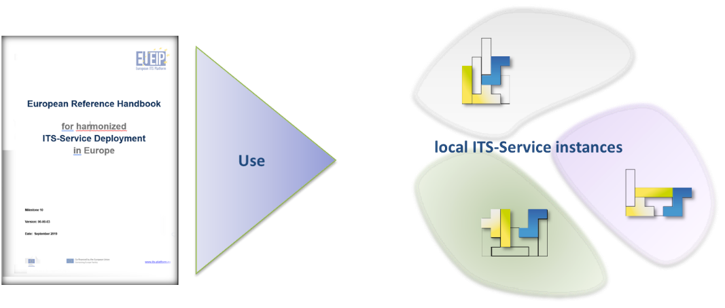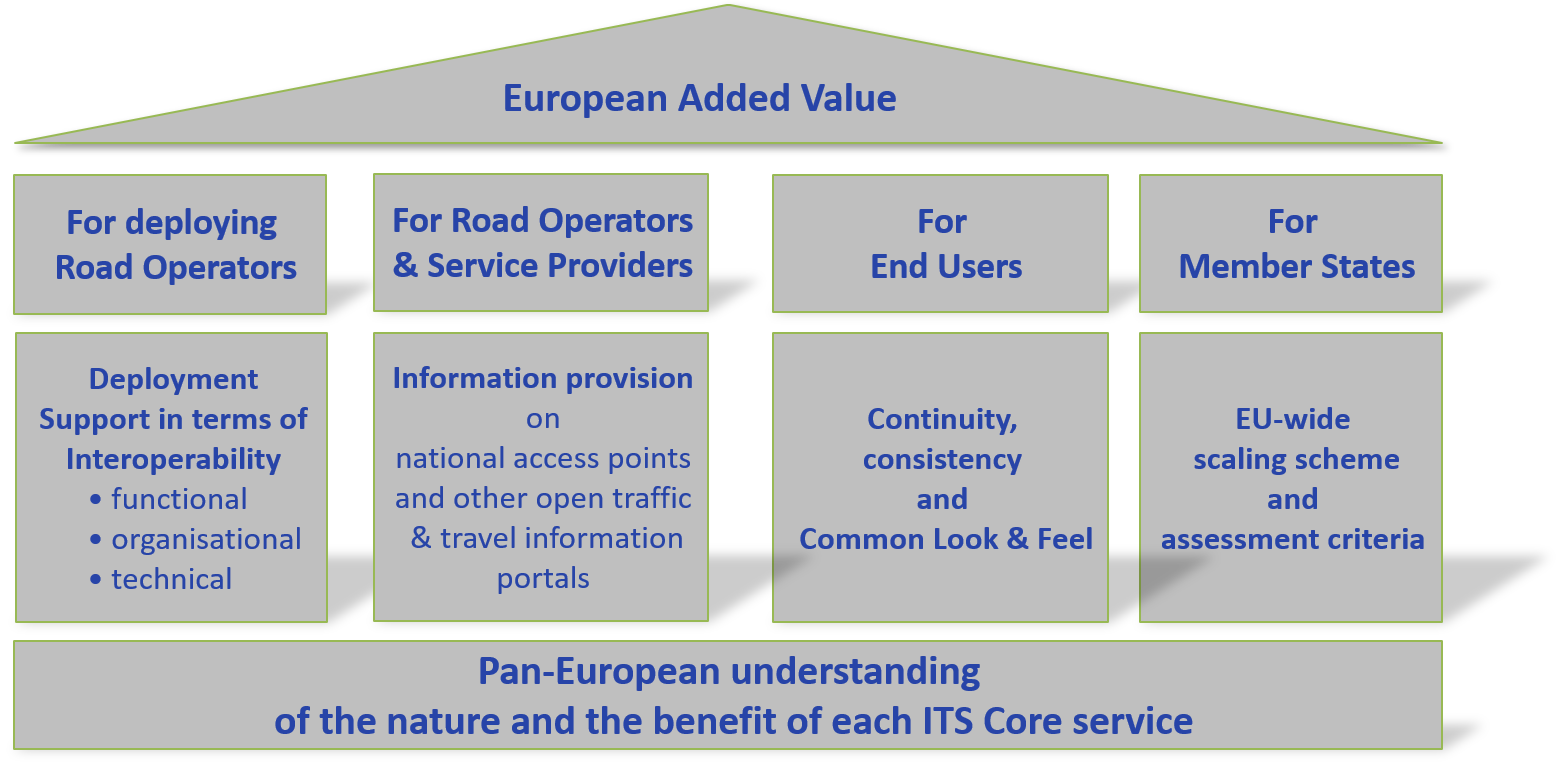It can be stated that the primarily motorway oriented ITS Service Deployment Guidelines are ahead of their time delivering
- not only a collection of about 600 pages of well-structured, on European level accepted and practical ITS Expert know-how providing all necessary requirements addressing all essential building blocks which are crucial for a harmonised deployment of ITS services across Europe
- but beyond these ITS deployment oriented advises strong conceptual foundations to be re-used as tools to describe and assess relevant aspects of ITS deployments in the future (where no practical experiences exist) with a different technological background (i.e. C-ITS, automated driving…) and in a different spatial domain (i.e. Urban ITS…);
But it must be also stated that the intention of the ITS Service Deployment Reference Handbook is not to deal with the specification of the internal details of ITS Services, e.g. to suit requirements for tendering of such systems. This would require a very extensive and time-consuming harmonisation and standardisation approach, e.g. common European-wide system architecture for ITS Services. Instead, the adjustment of existing specifications and ITS Service solutions which are already operational is limited to interfaces (interoperability) and quality characteristics (common look & feel, common assessment criteria).
Rather, the aim of cross-European harmonization and interoperability is to create a European added value for the road users. ITS Services shall be equipped with features providing additional benefit for inter-regional and cross-border road users. The situation is represented in figure 2:

Based on a Pan-European accepted understanding of the nature and the benefit of each ITS-service, an European Added Value is generated for different user groups through four main pillars, which are depicted in the following figure 3:

In detail the following added values can result:
- Interoperability in terms of functional, organisational and technical features to harmonise cooperation and collaboration between different road operators and other third parties involved in the deployment and operation of an ITS-service
- Information provision on national access points and other open traffic & traveller information portals
- Common Look & Feel to present ITS-services to the road user in a harmonized European way
- European-wide accepted assessment criteria to offer assessment against the background of harmonized level of service and operational environment criteria